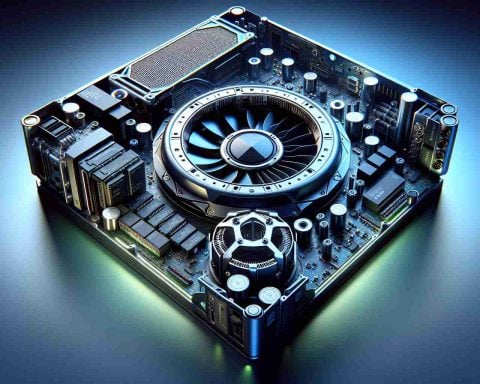- NREL is leading advancements in electric vehicle (EV) infrastructure, crucially developing the Megawatt Charging System (MCS) to facilitate fast charging for commercial EVs.
- The MCS offers an impressive charging rate of up to 3.75 megawatts, transforming lengthy charging wait times into quick 30-minute stops.
- NREL’s state-of-the-art evaluation facility rigorously tests EV charging technologies to ensure high power delivery safely and efficiently.
- The eCHIP project integrates renewable energy sources directly with the charging infrastructure for more efficient power delivery to EVs.
- NREL’s data-driven tools, like HEVII and the EVI-X modeling suite, are crucial in providing customized charging solutions, enhancing the deployment and operation of commercial EV fleets.
- NREL continues to bridge technology and environmental sustainability, driving progress toward a cleaner transportation future.
A quiet revolution is underway on America’s roads, and it’s being powered not by gasoline, but by groundbreaking research at the National Renewable Energy Laboratory (NREL). As technologies mount to meet the surging demand for electric vehicles, NREL is at the forefront, preparing an extensive charging infrastructure to meet the needs of tens of thousands of commercial EVs.
At the heart of this effort is the ambitious Megawatt Charging System (MCS). Imagine a vast electric current, robust enough to rejuvenate a heavy-duty truck while its driver sips a coffee—transforming hours of downtime into a mere 30-minute pit stop. This MCS standard promises charging rates that peak at an awe-inspiring 3.75 megawatts, making it the linchpin in an evolving charging ecosystem.
NREL is not just setting standards but building the future—quite literally—with a cutting-edge EV charging emulation and evaluation facility. Here, prototypes are tested rigorously, ensuring they deliver maximum power safely and efficiently. This hub of innovation helps manufacturers debug and refine technologies, advancing the capabilities of electric trucks with each iteration.
A visionary project, eCHIP, sets the stage for a future where charging infrastructure seamlessly integrates with renewable energy sources like solar panels. By distributing direct current directly to vehicles, this system cuts unnecessary losses, a leap toward a cleaner, faster charging experience.
Bolstered by decades of data, NREL’s research tools, such as the Heavy-Duty Electric Vehicle Integration and Implementation Tool (HEVII) and the EVI-X modeling suite, enable tailored charging solutions for commercial fleets, slashing operational barriers and accelerating adoption.
With each stride, NREL paves the highway to a greener future, tirelessly refining the nexus of technology and environment. The road ahead gleams bright with promise, and NREL is lighting the way.
The Electric Era: How NREL’s Innovations Are Transforming America’s Roads
As electric vehicles (EVs) continue to gain momentum, the National Renewable Energy Laboratory (NREL) stands at the forefront of this green transformation. While the source article highlights the groundbreaking work at NREL, additional insights into their impact extend not only to technology but also to global economies, sustainability, and the future of transportation.
How NREL’s Developments Impact Society and the Environment
1. Impact on Emissions and Climate Change
Electric vehicles are heralded for their potential to significantly reduce carbon emissions compared to traditional gasoline vehicles. As NREL develops more efficient charging systems and integrates renewable energy sources, the reduction in greenhouse gases will accelerate. According to the International Energy Agency (IEA), widespread EV adoption could decrease global CO2 emissions by up to 1.5 billion tonnes annually by 2030. This reduction is crucial in meeting international climate goals set by agreements such as the Paris Accords.
2. Economic Implications for Communities and Countries
The push for more EVs and improved infrastructure is creating a ripple effect across various industries. It leads to job creation in sectors such as renewable energy, battery manufacturing, and infrastructure development. Additionally, reduced dependency on oil can have significant economic implications, especially for countries reliant on oil imports. A shift towards renewable energy and EV infrastructure can lead to energy independence and more stable energy costs.
3. Influence on Technological Advancement
NREL’s developments are setting the stage for technological innovations beyond EVs. The integration of solar panels and direct current systems as mentioned with eCHIP exemplifies a convergence of technologies that could revolutionize other sectors such as home energy systems, grid management, and industrial applications. This integration can lead to smarter, more resilient energy systems worldwide.
Key Questions About the Future of EVs and Charging Infrastructure
Q: How will the development of EV infrastructure impact traditional fuel industries?
As EV adoption increases, the demand for gasoline and diesel is expected to decline significantly. This can lead to restructuring within traditional oil and gas industries, potentially leading to job losses but also creating opportunities for these industries to invest in renewable energies and EV technologies.
Q: What are the potential challenges for the widespread adoption of EV infrastructure?
While technological advances are rapid, challenges include high initial investment costs, the need for standardized charging systems across regions, and ensuring the grid can handle increased loads. Policies and investments at both national and local levels will play critical roles in addressing these challenges.
Q: How is NREL ensuring the safety and reliability of charging systems?
NREL’s EV charging emulation and evaluation facility is central to ensuring the safety and efficiency of charging prototypes. By rigorously testing these systems, potential faults can be addressed before widespread deployment. This is crucial in maintaining public trust and safety as EV infrastructure expands.
Related Links for Further Reading
National Renewable Energy Laboratory
As the electric revolution accelerates, NREL’s pioneering work lights the path to a future where the roads are greener, the skies clearer, and technology seamlessly integrates with sustainable practices. Each new development promises not only to transform America’s roads but to inspire similar advancements worldwide.













